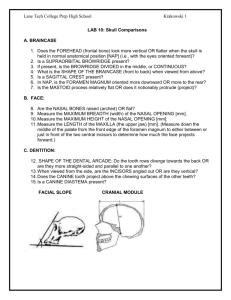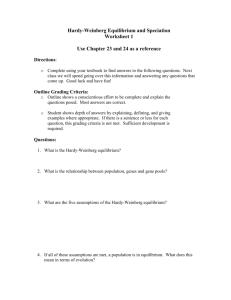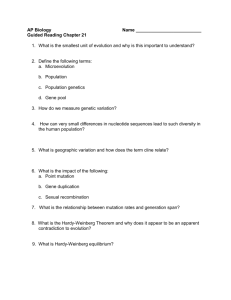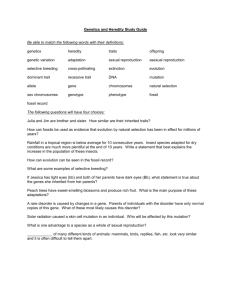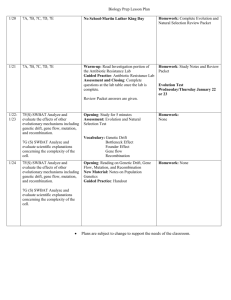HANDOUT 20: Microevolution Study Guide
advertisement
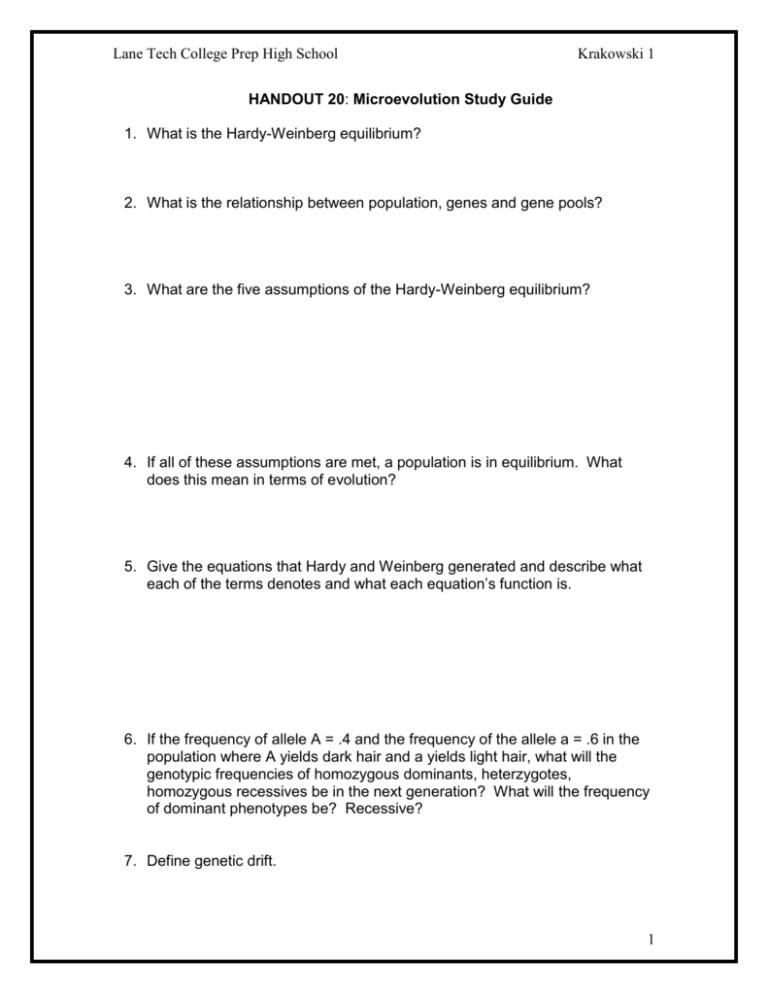
Lane Tech College Prep High School Krakowski 1 HANDOUT 20: Microevolution Study Guide 1. What is the Hardy-Weinberg equilibrium? 2. What is the relationship between population, genes and gene pools? 3. What are the five assumptions of the Hardy-Weinberg equilibrium? 4. If all of these assumptions are met, a population is in equilibrium. What does this mean in terms of evolution? 5. Give the equations that Hardy and Weinberg generated and describe what each of the terms denotes and what each equation’s function is. 6. If the frequency of allele A = .4 and the frequency of the allele a = .6 in the population where A yields dark hair and a yields light hair, what will the genotypic frequencies of homozygous dominants, heterzygotes, homozygous recessives be in the next generation? What will the frequency of dominant phenotypes be? Recessive? 7. Define genetic drift. 1 Lane Tech College Prep High School Krakowski 2 8. Define the phrase ‘variation in traits’ of a population. 9. Why is variation so important to the success of any population? 10. What is the bottleneck effect. Give an example. Explain why the bottleneck effect is an example of genetic drift and how it causes evolution to occur. 11. Explain how a population bottleneck decreases variation within a population. 12. What is the founder effect? Give an example. Explain why the founder effect is an example of genetic drift and how it can cause evolution to occur. 13. Explain how the founder effect decreases variation within a population. 2 Lane Tech College Prep High School Krakowski 3 14. Define gene flow. Explain how gene flow can cause evolution to occur. 15. Describe what a mutation is. Where in an animal must a mutation occur in order for it to be passed on to offspring? When does a mutation cause evolution to occur? 16. Why is mutation in and of itself not evolution? What must happen for evolution to occur? 17. Is a mutation a response to environmental pressure? Explain 18. Why is mating never completely random? What is assortative mating? 19. Define ‘Natural Selection’ and explain how it causes evolution to occur. 20. What are the three types of natural selection – define them and give an example. How do they differ from one another? Which one do you think would lead to two ‘new species’ being created? Explain. 3 Lane Tech College Prep High School Krakowski 4 21. What happens to gene frequencies in a population when the environment is changing? When it’s stable? 22. What does it mean to be ‘selected for’ or ‘selected against’ in an evolutionary sense? 23. Give examples of adaptations/homologous structures/analogous structures. 24. Describe the two main points of Darwin’s book Origin of Species. 25. Describe Darwin’s 5 main points to his Theory of Evolution by Natural Selection. 26. What are fossils? 27. What do fossils tell us? 28. What evidence is there for evolution? Describe them. 29. Compare and contrast Artificial Selection and Natural Selection. 4
